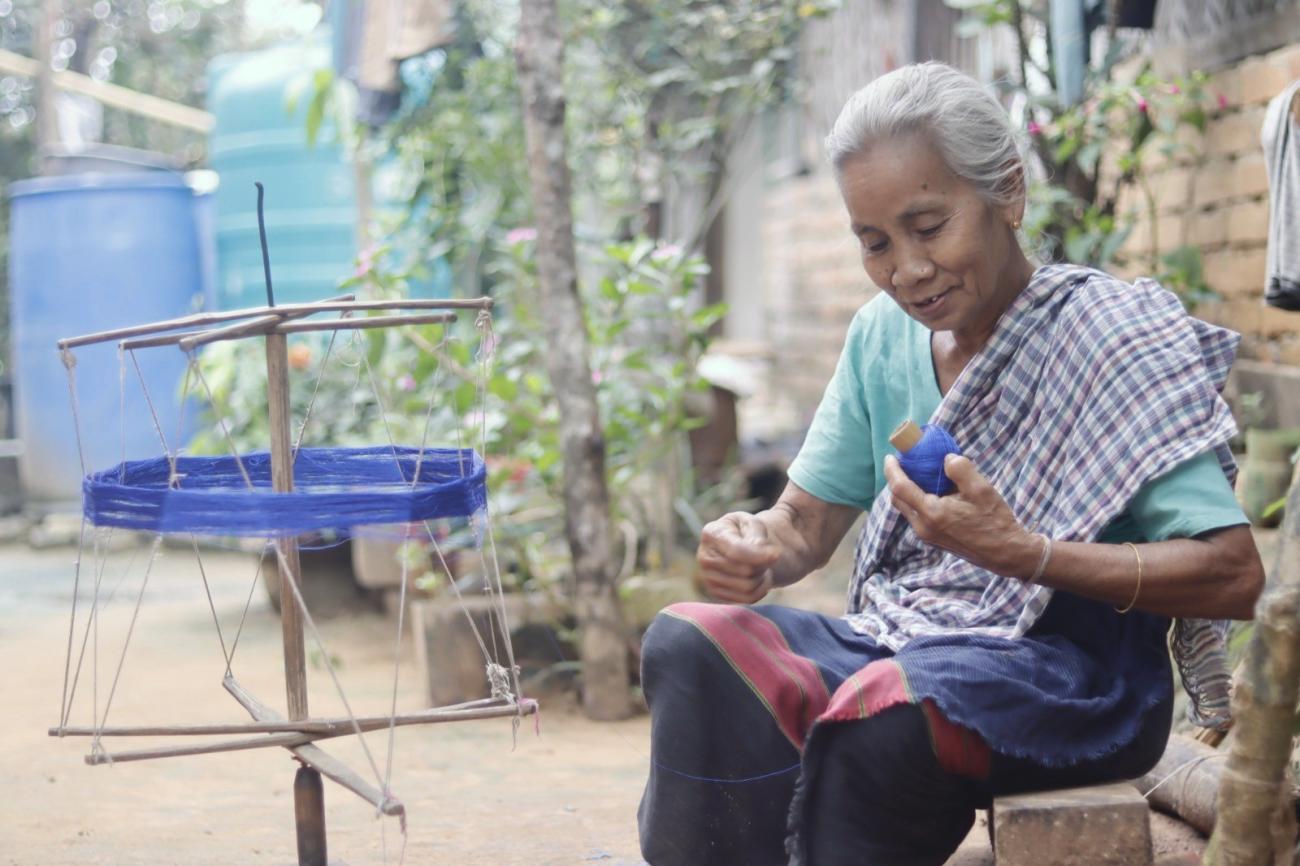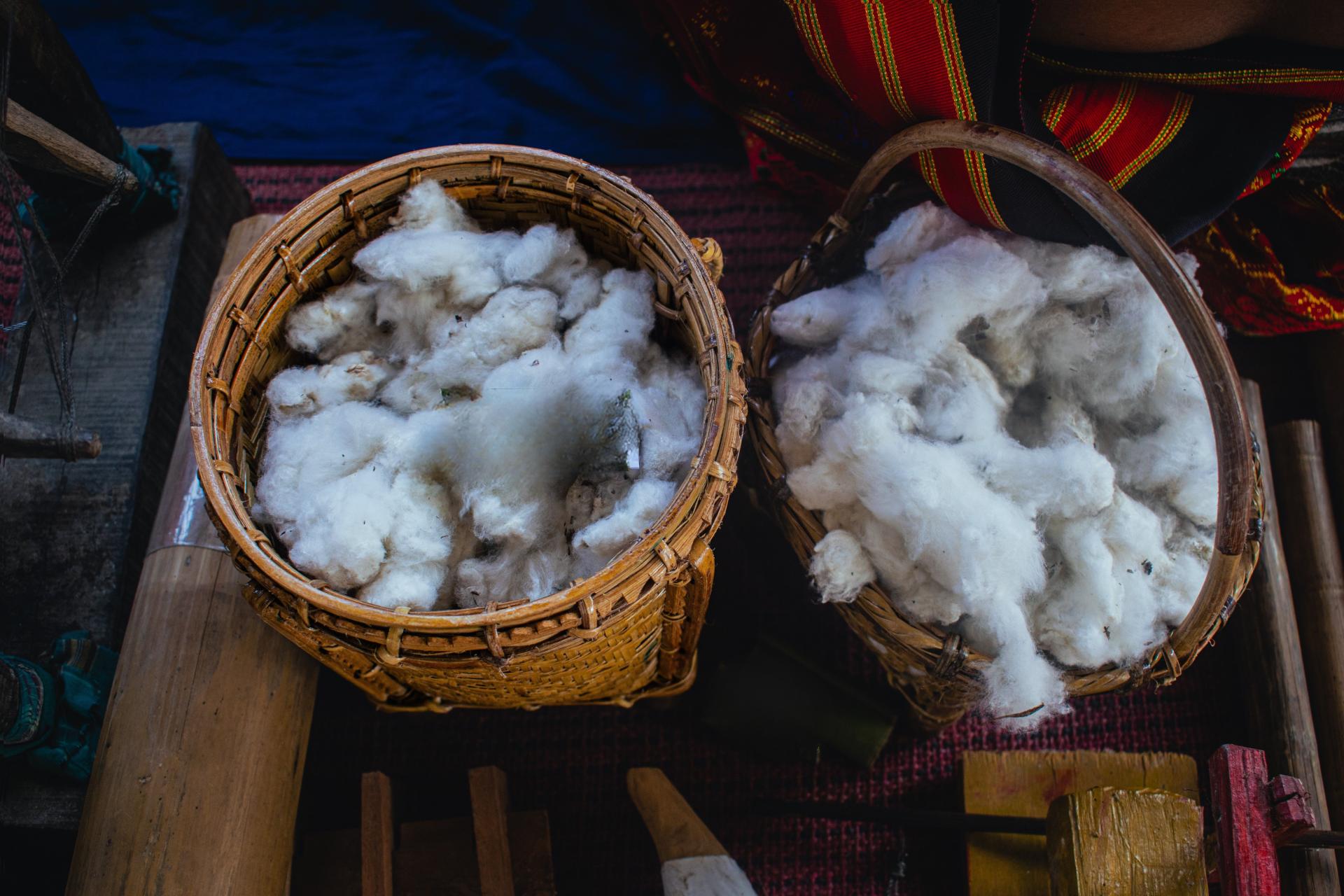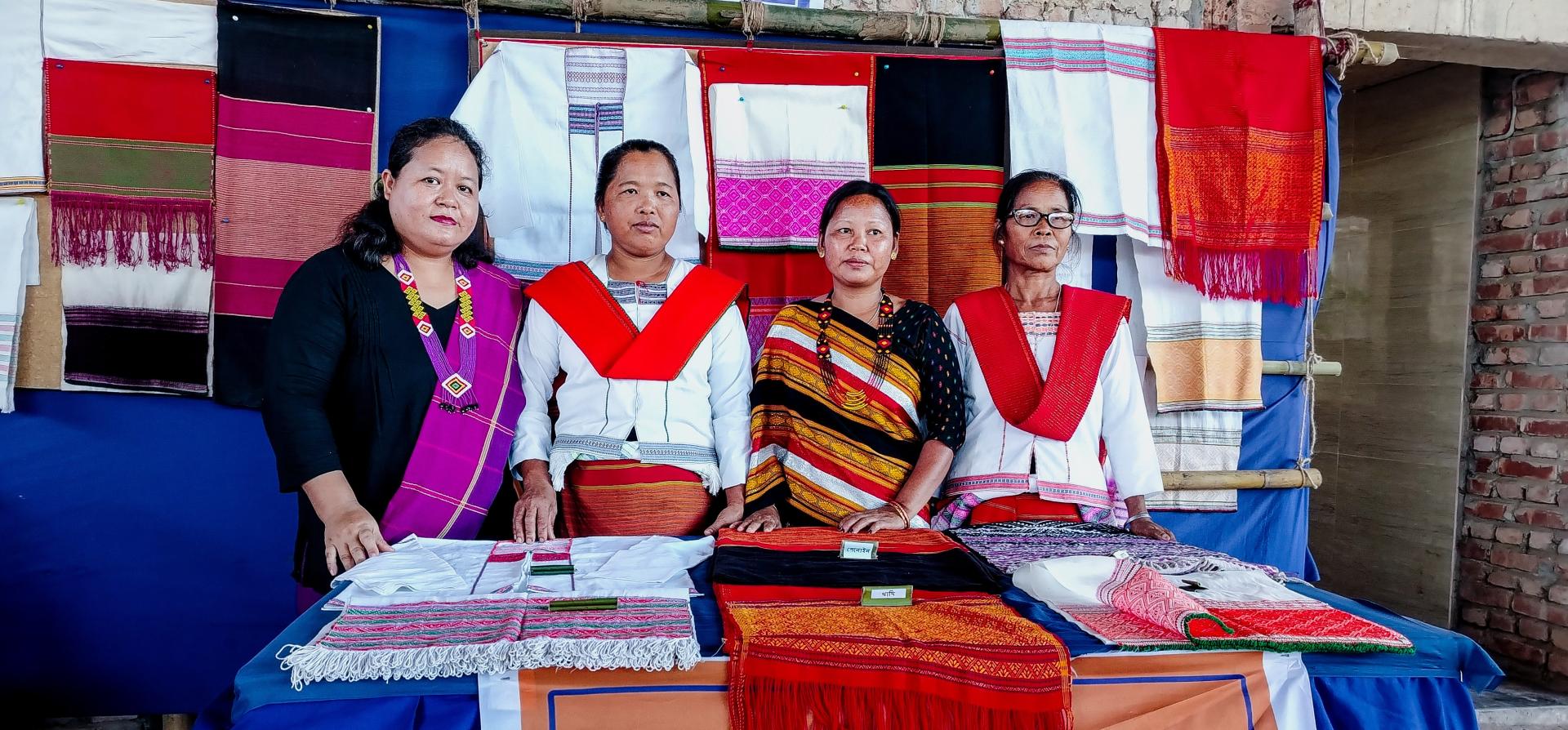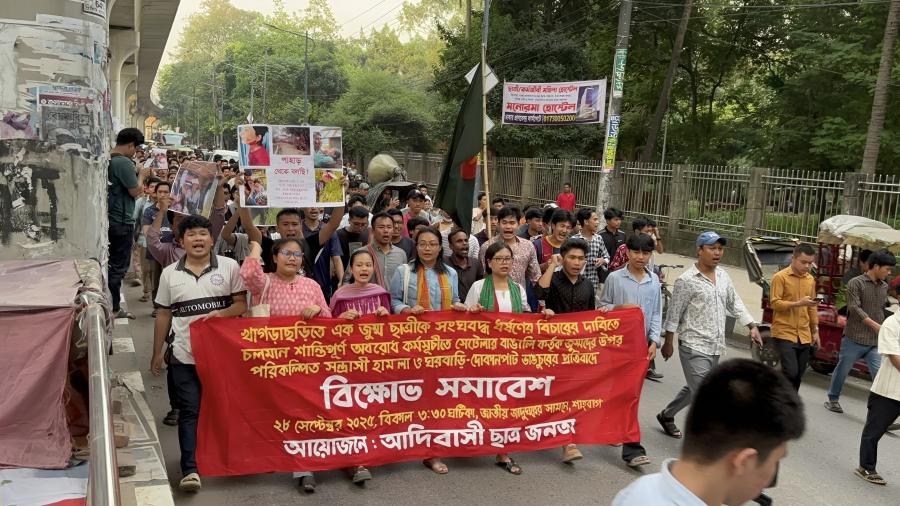
By Prama Dewan (CS Intern)
In the quiet courtyards across the hills of southeastern Bangladesh, the soft clack of the loom can still be heard. Threads of many colors twist and cross, creating not just fabric, but stories. In these threads live memories of rivers, forests, and hills—woven by Indigenous women who have carried this art through generations.
Weaving has long been more than a craft for the Indigenous Peoples. Bangladesh is home to more than 50 Indigenous communities, each with its own distinct culture, language, and traditions. However, many of these practices, including weaving, have faded over time due to displacement, modernization, and the loss of access to ancestral lands. Nonetheless, in the Chittagong Hill Tracts (CHT), communities such as the Chakma, Tripura, Mro, Tanchangya, Pangkhua, Bawm, and others, as well as in the plains, the Garo, Khasi, and many more, have kept their weaving practices alive. It is a way of life built on balance with nature. Each pattern, each color, speaks of connection and respect.
The art of weaving in the hills of CHT has a rich history that stretches back centuries. Cotton grown through jhum cultivation was once so prized that Mughal traders called the region Carpus Mahal—“the cotton estate”—and exported its fine yarn to Europe. From this cotton, Indigenous artisans, both men and women, created every piece of traditional attire and household items such as boga gamchha, borgi sheet, and aht habar. But this golden era slowly faded. Cotton cultivation required precise weather conditions and careful attention; dyeing involved collecting pigments from the forest; and weaving on the waist loom required both strength and patience. As colonial trade expanded and factory-made fabrics and clothes filled the markets, this slow, earth-rooted process of weaving began to lose ground.

The decline began with men. Their involvement in various stages of weaving, such as dyeing yarns, gradually diminished. As formal education and wage labor became more accessible, many left traditional livelihoods. Machine-made clothes replaced their handwoven ones, and with them faded the communal cultivation of cotton in jhum and the shared knowledge of natural dyes.
Yet the women remained. While men moved away from ancestral practices, women preserved the loom, the colors, and the patterns. They became the last keepers of a tradition once shared by the whole community.
Every piece of handwoven cloth begins with the gifts of nature. Women collect cotton from jhum fields on the hillsides, then dry it in the sun, clean it, and spin it into yarn using the nadei (spinning wheel). The colors also come from the earth: red from the rong gachh root, black from the kala gab bark (from the banana tree), blue from indigo leaves, and yellow from turmeric and mango bark. To make the colors last, the yarn is buried in soft river mud before weaving. The motifs and designs, inspired by plants, insects, and animals, carry names that reflect their origins: Hangara (crab), Begun biji (eggplant seed), Juni sokku (eye of the firefly). These are not mere decorations; they are symbols of harmony between people and nature.

The traditional backstrap loom, known as bain, is a simple but beautiful tool. Made from bamboo and wood, it requires no machine, no electricity. One end of the loom is tied to a post or tree, the other around the woman’s waist. As she leans forward and back, the fabric grows between her hands, thread by thread. Other tools, such as sticks and reeds, are also carved from bamboo and polished smooth over the years through use. Many are passed down from mother to daughter, carrying both touch and memory.

Weaving has always belonged to women. It is where work, knowledge, and creativity meet. Elder women teach the younger ones to count threads, weave the flowers as designs, and understand the meanings behind the patterns. Girls learn to weave from their mothers and grandmothers. Through this artwork, women gain both independence and pride, creating clothing for their families that lasts for generations, and ceremonial fabrics for festivals. It is an act of faith and community.
For Indigenous communities, sustainability is not a new thing. It is an inheritance. Every part of the weaving process respects nature. The bamboo used for looms grows back quickly; the dyes come from plants and return safely to the soil; even leftover yarn is reused. Nothing is wasted. This circular way of living teaches balance and gratitude—a lesson which the modern world forgets.

As modern life transforms everything, weaving too faces many challenges. Machine-made fabrics fill local markets, and many young people leave for cities seeking jobs that offer greater comfort and social respect. The practice is slowly declining as a result. It offers little income for most, yet it remains a source of empowerment and pride for many women.
Today, many young women from Indigenous communities, both from the hills and plains of Bangladesh, are trying to revive these traditions, linking weavers to wider markets while preserving authenticity. Their work brings income, dignity, and recognition, demonstrating that preservation and progress can coexist.

However, this revival also comes with challenges. As Indigenous patterns gain visibility in modern fashion markets, many commercial brands now reproduce traditional motifs and market them as “ethnic” designs. While such exposure can uplift Indigenous identity, it often comes at a cost. The designs are frequently altered to fit consumer tastes. As colors are changed, meanings get ignored, and symbols taken out of context— the authentic creations often seem less appealing now. In some cases, these well-known fashion houses and local boutiques alike borrow designs without crediting or compensating the communities that created them. This not only erases cultural knowledge but also denies Indigenous artisans the rightful economic benefits of their own heritage.
Protecting Indigenous weaving traditions is therefore not just about art, but about justice, respect, and the defense of intellectual and cultural sovereignty. Each motif, each thread, represents inherited wisdom: a record of ecological knowledge, balance with nature, and collective memory. To preserve it is to honor both the artisans and the land that sustains them.
The women who continue to weave do more than keep their culture alive. They remind the world how to live in harmony with nature and how to create without harm. In their hands, the protection of tradition and the protection of the planet are one and the same.


